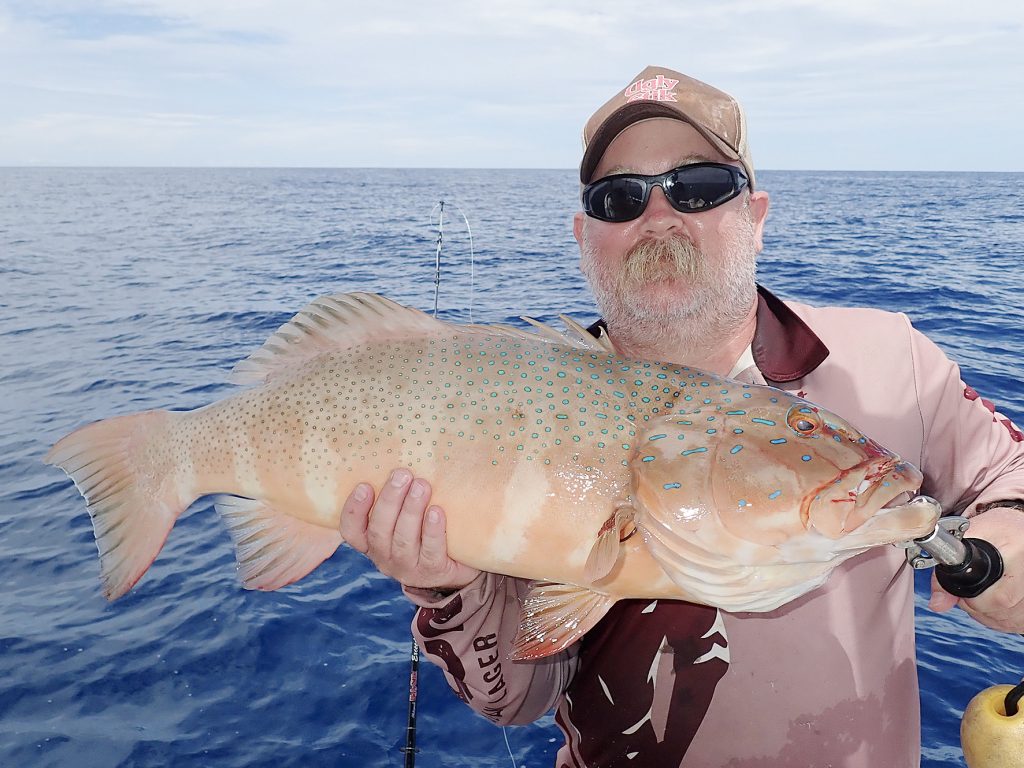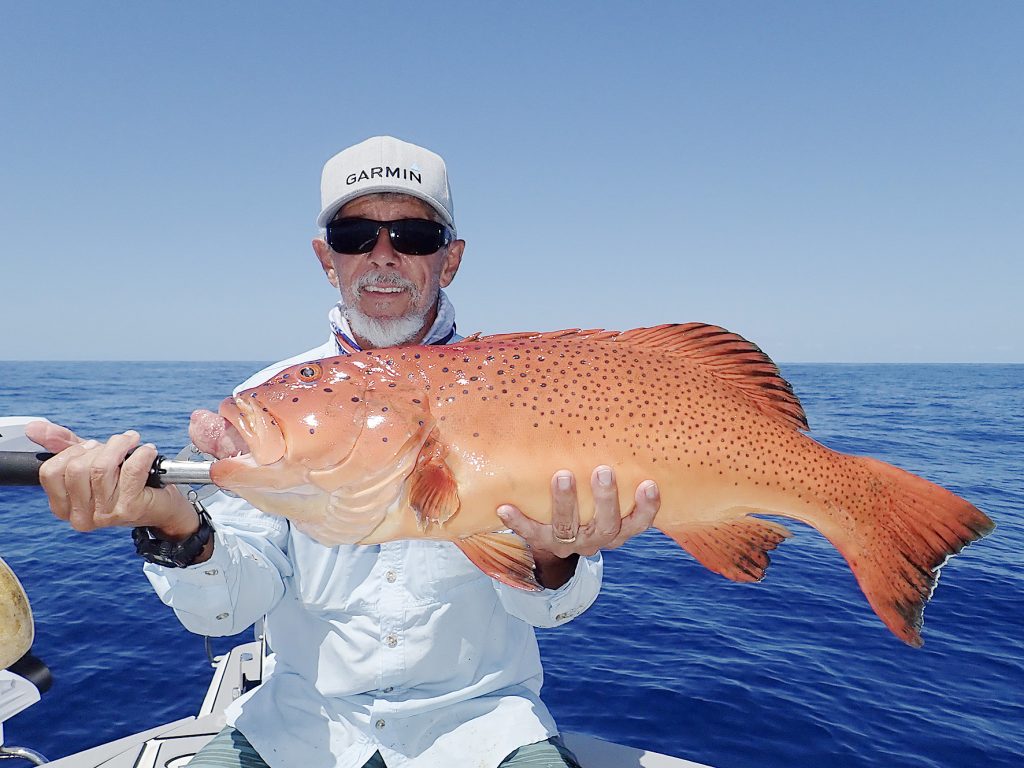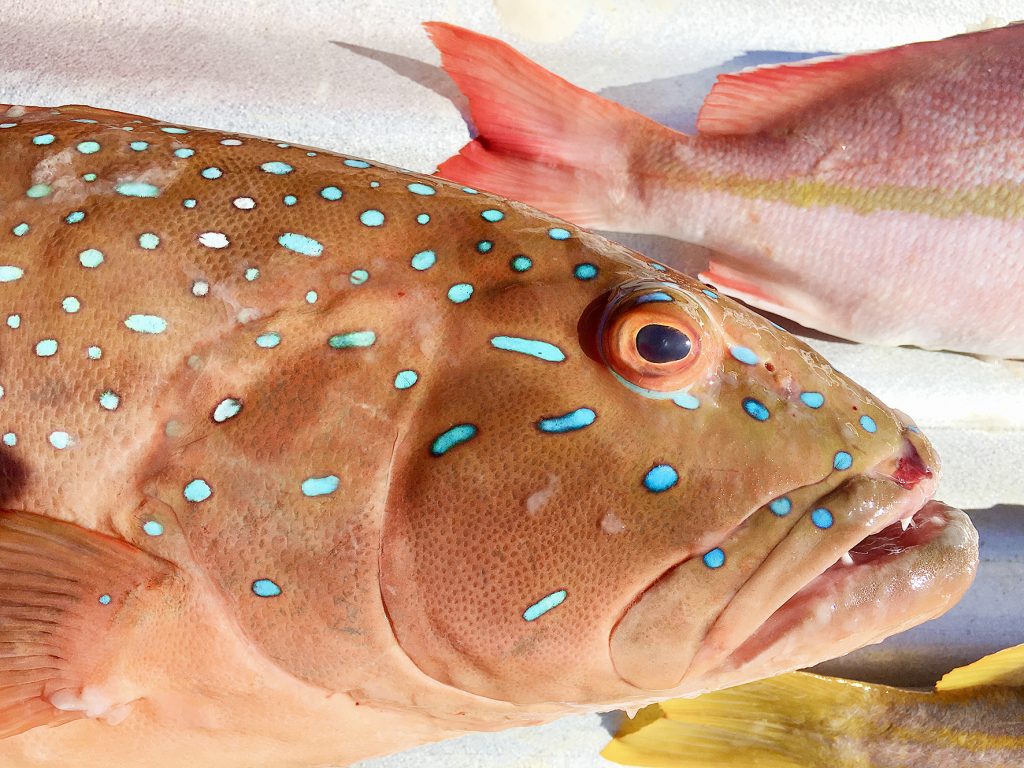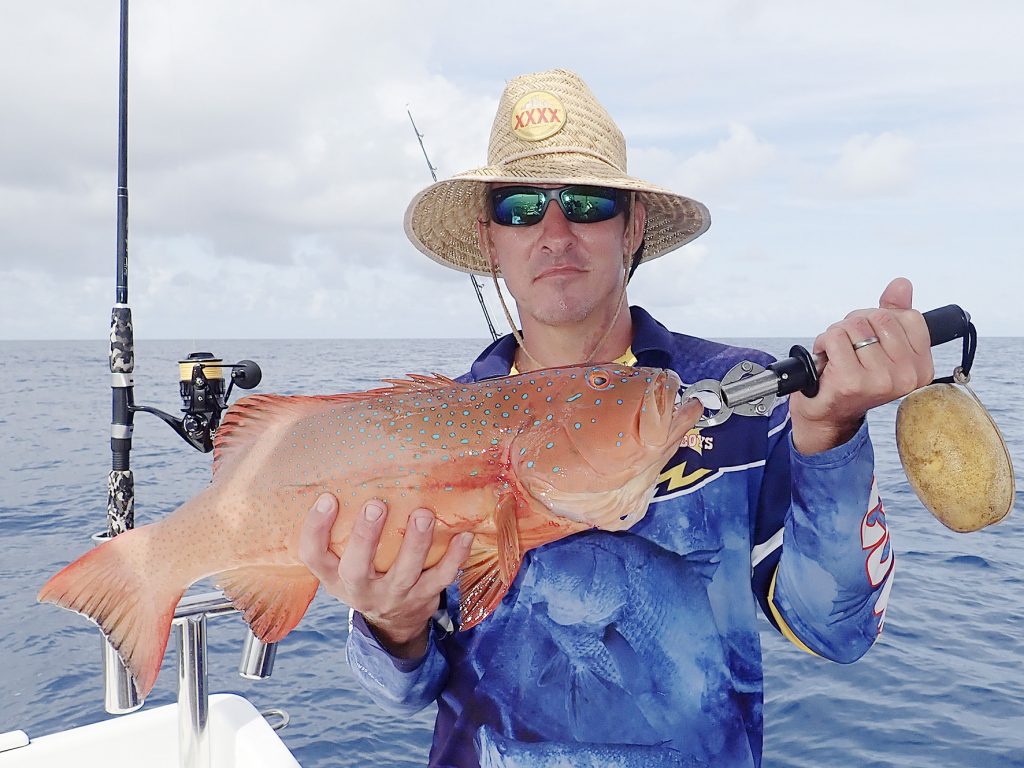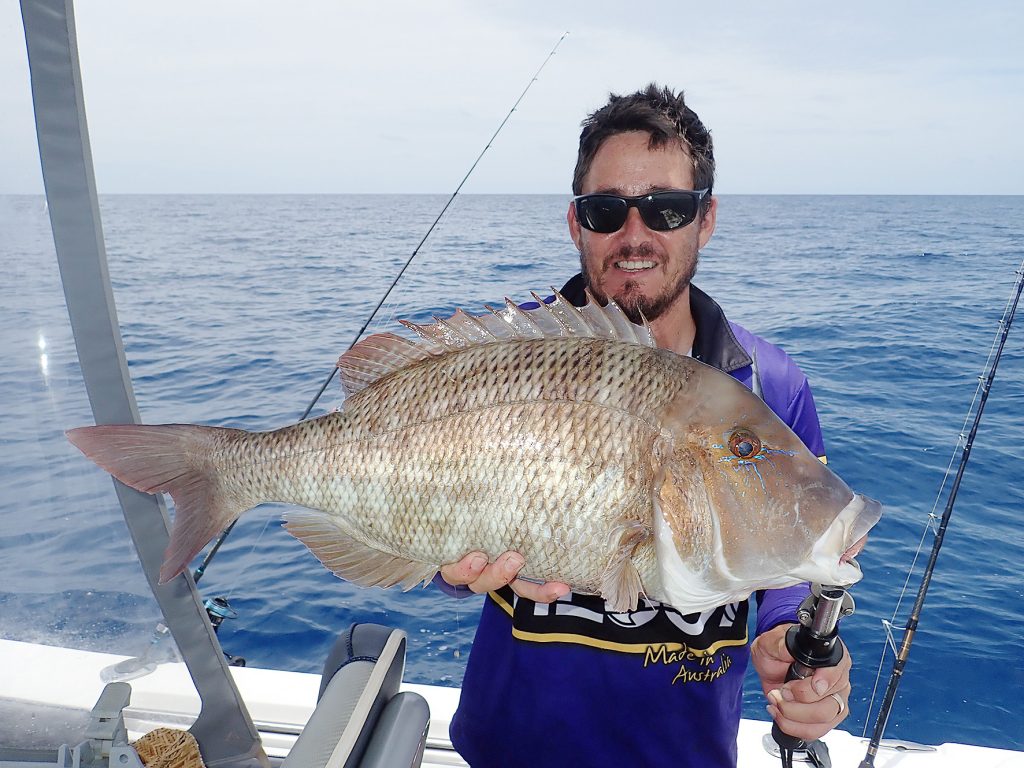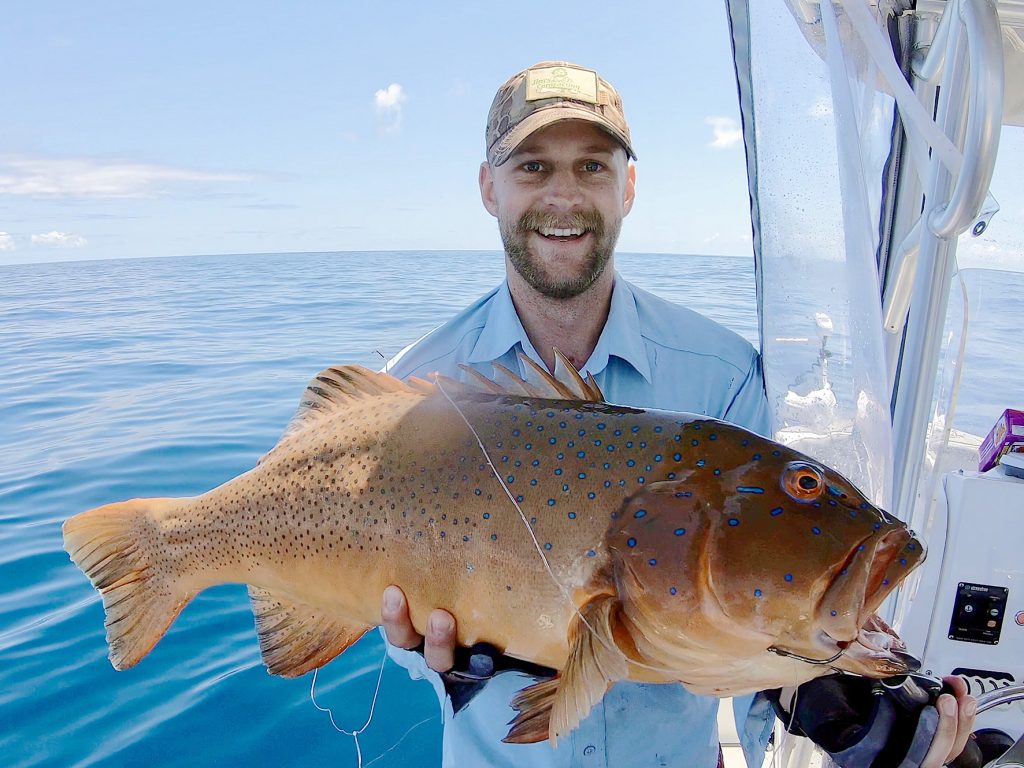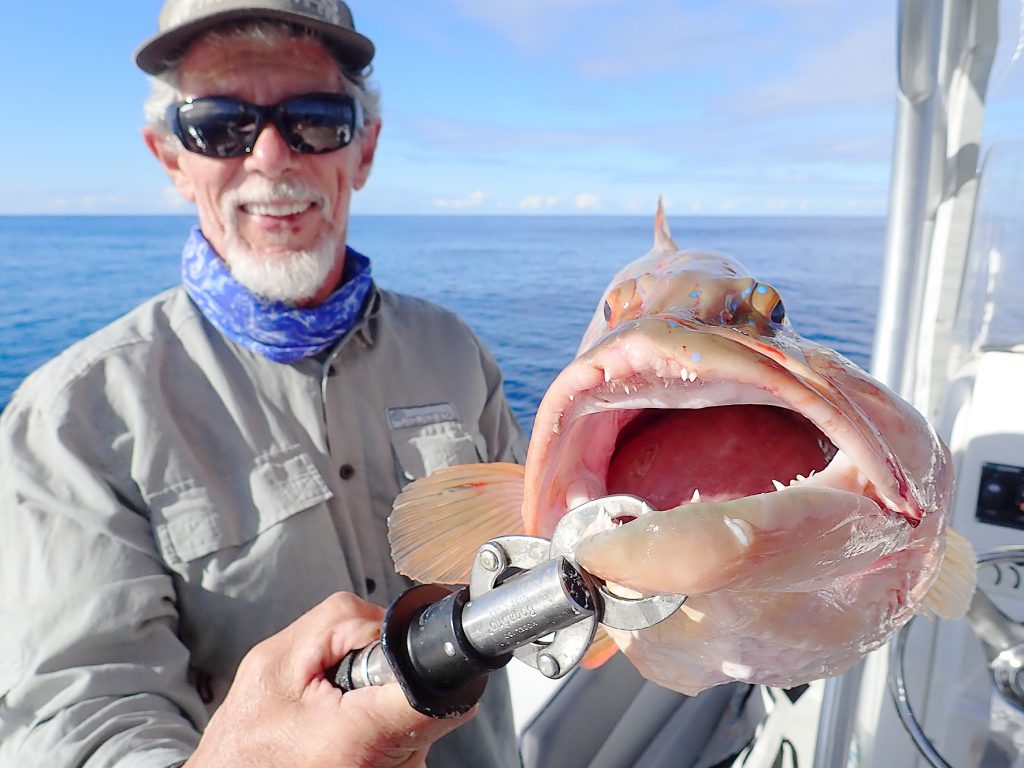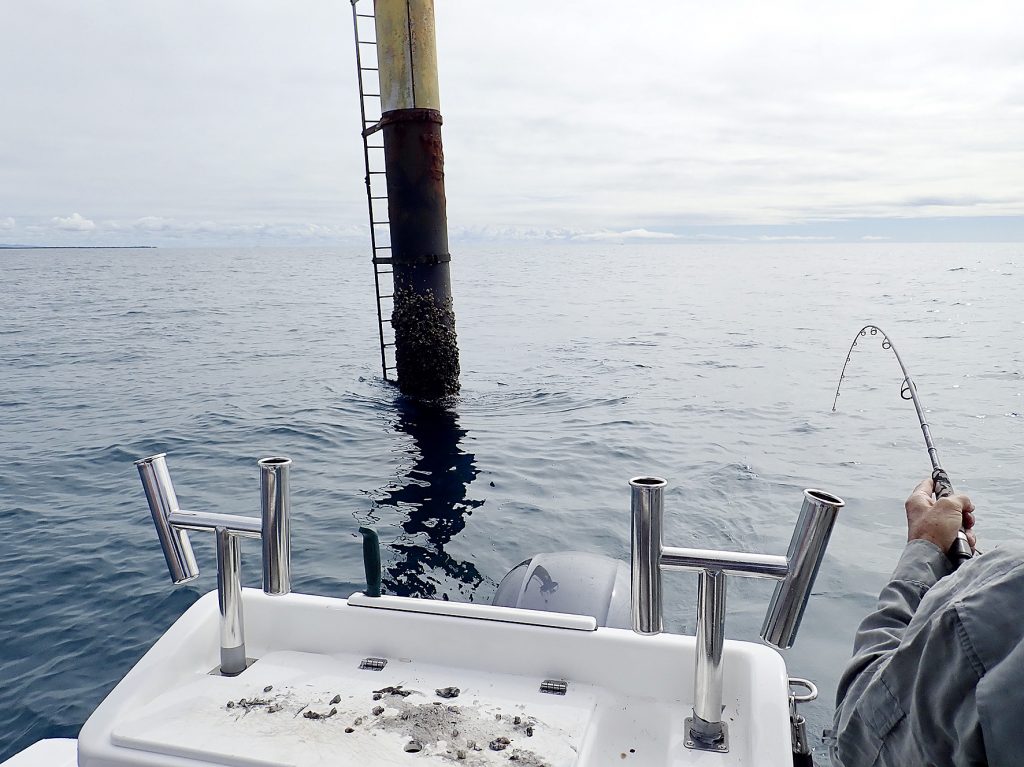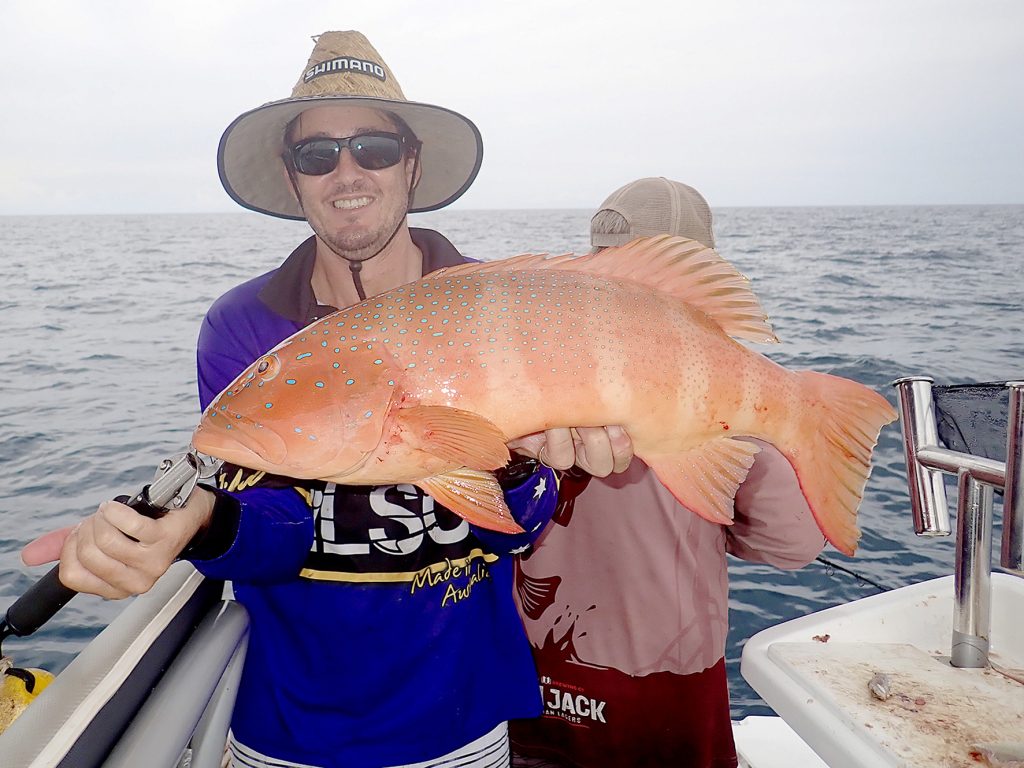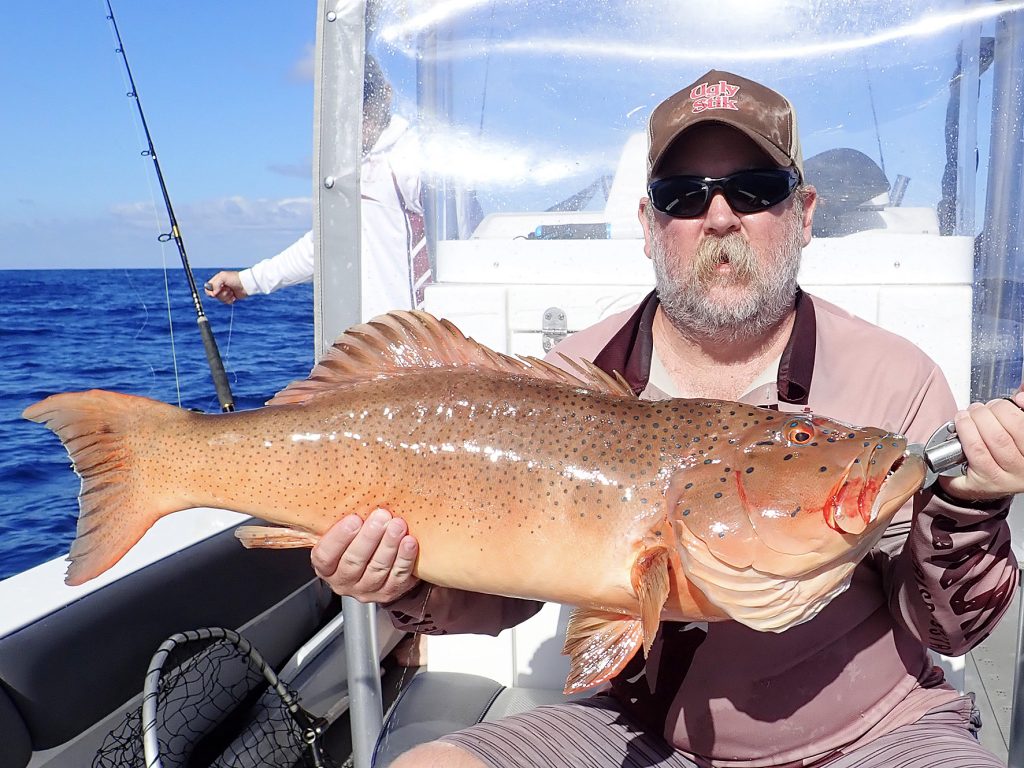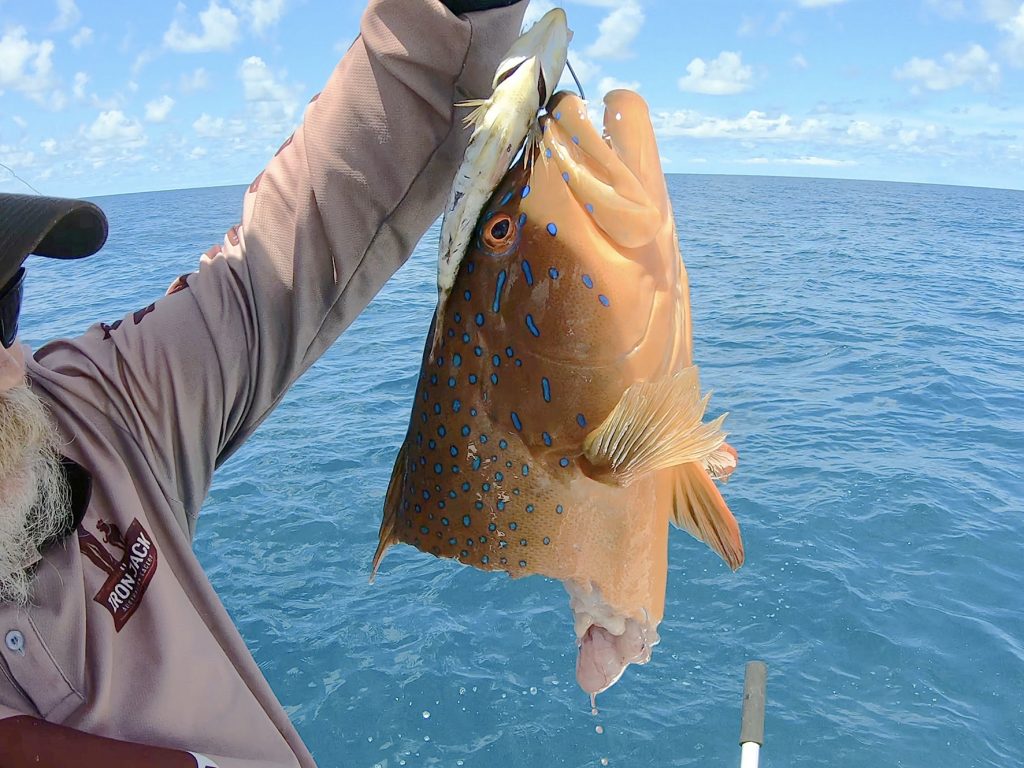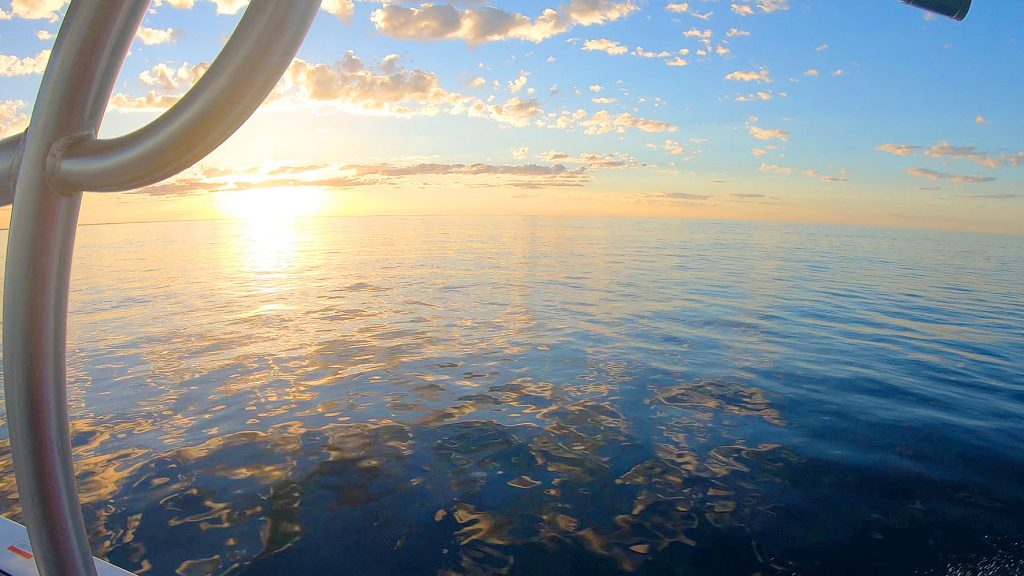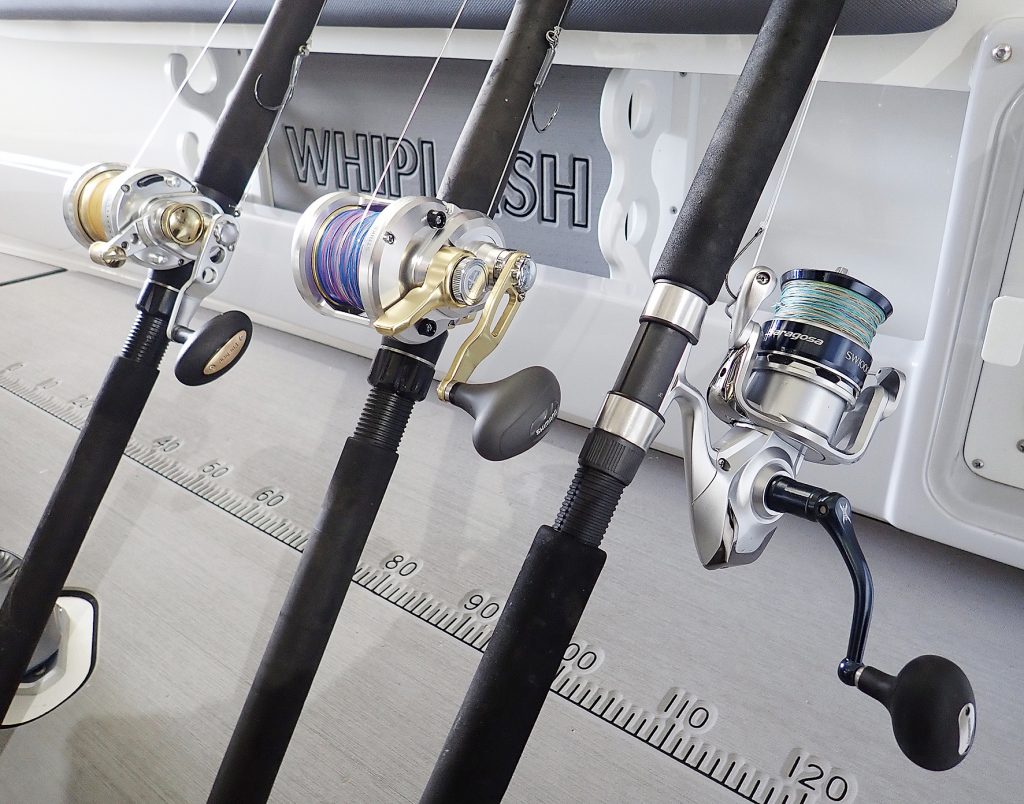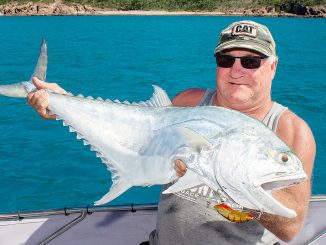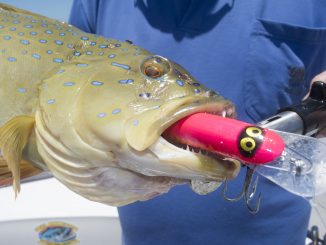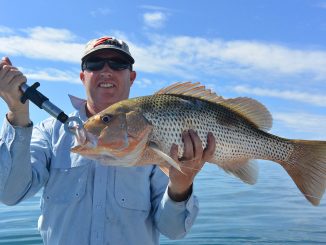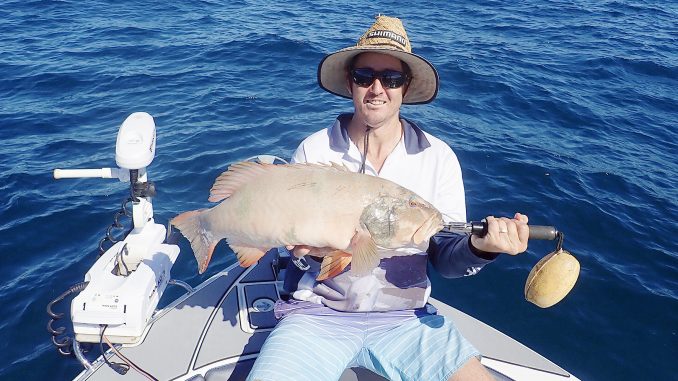
• by John Loeskow
Coral trout would have to be one of the most sought-after fish species across the top half of Australia. From the Sunshine Coast in Queensland to Shark Bay in Western Australia, trout are often the target for anglers chasing demersal fish in shallow to medium depths of water off the coastline.
A hard fighting fish that combines spectacular looks, an attraction to natural and artificial presentations from top to bottom, and a well-deserved reputation as one of the tastiest fish on the planet, it’s little wonder coral trout are such a popular species. Although trout are usually associated with hard structure, like shallow reef and ledges, some of the bigger specimens can be found (and successfully landed) well away from significant bottom structure. Trout are generally more prevalent through the warmer months, but we’ve caught trout every month of the year and some of our biggest have been through late autumn and early winter. In this article I will outline some of the effective techniques and areas that bigger trout like to call home.
In the regions we predominantly fish out from Bundaberg, the vast majority of trout caught are bar-cheeked coral trout (Plectropomus maculatus). Occasionally we’ll catch common trout (Plectropomus leopardus) but these fish are normally encountered closer to hard reef in shallower water under 25m. Their colours can vary quite a bit, but the distinct horizontal blue bars on the side of the head are a key distinguishing feature.
Unlike fishing in shallow water under 20m, we rarely see fish under 3kg and a trout isn’t regarded as a big fish until over 5kg. Fish this size put up a great fight upon hook up, and the first 10 seconds are where the fight is either won or lost. Once pulled away from the bottom they generally give up the ghost, but the experienced angler will recognise this as typical trout behaviour. Nevertheless, as soon as a good trout comes in to view all attention on the boat goes underwater until the landing net slides under the fish.
AREAS TO TARGET
Looking at a contour map or Navionics chart, the typical locations to target coral trout are pretty obvious. Shallow reefs, steep ledges and gutters all show up well on charts and can’t be discounted as potential spots to try and catch a trout. But with ever-increasing fishing pressure you can be assured if something looks productive on a map or chart, it has no doubt been fished extensively.
The additional problem of high levels of shark activity seems to be directly related to well-known drop-offs, gutters and ledges that experience frequent angler exposure. Regular anglers will confirm that while sharks may ignore less desirable species like triggerfish, trevally and remora, as soon as a trout takes a bait, they will hone in like an Exocet missile. I’ve seen a couple of trout heads come to the surface after shark intervention and have come to the conclusion that sometimes it would be better not to know…
As the country we fish is generally devoid of obvious structure you normally won’t get too many clues from a standard chart or map. Fishing away from obvious structure may seem counterproductive but is essential for finding locations that go under the radar. The more time you spend looking for new spots, the better. I know this is hard for anglers that don’t fish as much as they’d like but it’s the only way to get ahead of the game. If you have a few marks that see more pressure than you’d like, identify some adjacent areas that could potentially hold productive ground.
In flat country you won’t need to see big variations in depth to hold fish. Concentrations of bait are the key. Bait will often hold away from structure so search the surrounding area for clues as to where the bigger fish might be located. Despite what many people may say, trout will range a reasonable distance from isolated structure to feed because the bait schools in these patches are highly mobile. This is especially true at the top and bottom of the tide when predators move away from holding points.
RIGGING TECHNIQUES
The majority of coral trout line fishing uses a single or gang hook rig fished below a running ball sinker. In shallow water, fishing with dead and flesh baits is a very effective technique. Concentrations of small and medium sized fish are high and competition for food is at a premium. In deeper water, where numbers are much lower but average size increases, you will need a bigger carrot to get their attention.
We do catch a few trout on dead baits and their appeal to other species, like grass sweetlip, red emperor and tuskfish, mean they should definitely be a part of your fishing arsenal. The best baits are fresh fish slabs, whole scad and cocktail baits like pilchard and whole squid combos. But looking back through the last few years, over 90% of the trout we’ve caught have been on live baits. Every trip we do these days we will have at least one angler fishing a live bait, and if we expect the fishing to be good, we’ll put a live bait down on each side of the boat.
There are a range of rigs that can and do consistently catch coral trout on live baits. The particular method you use will depend on how you plan to fish other baits at the same time.
Some anglers will fish a live bait in a rod holder while fishing smaller baits for other species like sweetlip, tuskfish and hussar. In this situation an 8/0 to 10/0 circle hook pinned through the upper lip will allow a bait to swim freely and prolong its lifespan while waiting for the bite. After a fair bit of trial and error we have decided that live baits should be fished with the angler on the rod ready to go. While sweetlip and red emperor will often ‘play’ around with a bait before eating it, nine times out of ten a trout will simply engulf the bait with a buckled over rod the consequence. As the first few seconds are so crucial, a switched on and ready-to-go angler is generally the difference between success and failure.
Anglers’ preference will dictate the outfit used for this type of fishing. Both threadline and overhead setups are suitable, but both will need to be up to the task to get the job done.
Reels don’t need to be able to hold a huge quantity of line but will need a heavy drag to dictate the early stages of the fight. I would recommend a minimum of 50lb braid for this fishing but if you are exclusively fishing live baits, I’d bump that up to 80lb. During the warmer months we use about 4m of either 80 or 100lb mono leader and, although this sounds like overkill, it doesn’t seem to deter trout from eating.
In late autumn and winter, we may drop that back to 60lb fluorocarbon if the water is extremely clear or the bite slows down.
Running ball and standard paternoster rigs will both catch fish, but fishing a modified paternoster is very effective in areas without prominent structure. A dropper loop in the leader 20-30cm long allows the angler to alter sinker size as the tidal run changes. From the dropper we generally run 1-2m of leader before the two hook snelled rig. Longer leader lengths allow the live bait to swim more freely in low current situations but can let the bait swim around or under structure and get snagged.
For most of the bigger live baits a two hook snelled rig will always outfish a single hook. On the days where the fish are really smashing the baits, a single hook will get a reasonably good hook up rate. But obviously the fish don’t always play that way. On big baits like mackerel scad, pike and whiptail, we have found a two-hook system that has produced big coral trout consistently. The front hook is a Shinto Octopus 8/0 that is pinned sideways through the nostrils for scad and through the top lip for other bait species like whiptails. These hooks are seriously sharp and we haven’t had a hook bend out under load yet. This hook is snelled to a 6/0 Mustad Big Gun with a gap of about 15cm.
Likewise, the Big Gun is an extremely solid hook that will hold up to any punishment that gets dished out. It’s important to maintain a degree of slack line between the snelled hooks when the live bait is pinned to give the bait the maximum amount of movement. We’re looking at a few modifications to this rig involving a solid ring and split ring setup but this is a work in progress.
PREFERRED LIVE BAITS
In any given area up and down the coast there is a big variety of live bait species that are suitable for coral trout. The area we fish between Elliott Head and 1770 has a few options that will usually tempt most fish. We’ve found in the past couple of seasons that the warmer the water temperature, the less fussy trout are about what they will choose to eat. Blue-faced whiptail, pike, and just legal sized hussar and lancers make good baits for trout. They are pretty hardy and at this size even trout in the smaller size range will not pass them up.
Generally, the smaller whiptails make much better live baits than bigger specimens and will get the attention of some tasty by-catch like big grass sweetlip and red emperor. As the water starts to cool trout can get a bit more selective about what they choose to eat. Fortunately, this coincides with the arrival of big schools of mackerel scad.
Mackerel scad are basically the northern version of the slimy mackerel and they are irresistible to just about any big predator swimming. We’ve had days when all other live baits have been ignored but the scad just seem to produce the goods. Don’t discount the big scad as live baits either as we haven’t found one big enough not to get eaten, especially by XOS coral trout.
If you are lucky enough to catch scad over summer and early autumn you’re pretty much guaranteed to get a chance at some impressive fish. Just make sure you can try and keep them ahead of the sharks…
EXCELLENT BY-CATCH
In addition to trout, live baits will account for a range of other tasty critters. Big grass sweetlip won’t turn their nose up at a well-presented livey. It’s surprising how big a bait even a medium-sized fish in the 40-50cm range will happily engulf. Red emperor are highly regarded in all waters and fishing live baits will usually weed out most of the undersized fish that can be in plague proportions in some spots. While not highly regarded by all anglers, smaller gold spot cod in the 5-10kg range are excellent eating and will nail pretty much any baitfish they can fit down their gob. Other common by-catch includes cobia, both blue and brown Maori cod, Spanish mackerel and big tuskfish.
Please be aware that you may need to spend a decent amount of your fishing times getting enough live bait for the trip. While some days we can load up pretty quickly on other days they can be a real bugger to catch. We can often spend up to two hours trying to get the right species we’re chasing and for some this may sound like too much effort. However, it is usually the days when the bait is the hardest to get that they produce the best results. The quality of fish that this will put in the esky more than makes up for the time it takes to procure them.
Another important component is a well set up livewell that can accommodate a large number of baits. We run a live bait pump non-stop on the water as the scad in particular require a high volume of water exchange to keep them in optimum condition, especially at higher water temperatures. If all this sounds too hard, fishing live bait when reef fishing may not be for you. The ice box at the end of the day will tell the story. The results speak for themselves.
If you want any more information on rigs, baits, general fishing, check out our YouTube channel. Just search Whiplash Fishing.

